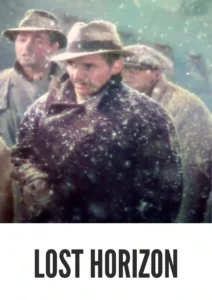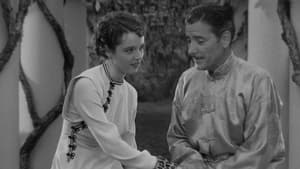Video Sources 0 Views
- Watch trailer
- Lost Horizon 1937 Colorized


Synopsis
Table of Contents
ToggleA Journey to Shangri-La: Lost Horizon (1937) in Vibrant Color

Experience the enchanting world of Lost Horizon, a captivating adventure fantasy film from 1937, now beautifully colorized for a fresh viewing experience. Directed by Frank Capra, this classic film tells the story of a group of travelers who discover the mythical land of Shangri-La, a paradise hidden in the Himalayas. With its blend of adventure, romance, and philosophical themes, this HD download is perfect for fans of classic cinema and those seeking a magical escape.
Lost Horizon Storyline: The Quest for Paradise
Lost Horizon follows the journey of Robert Conway (Ronald Colman), a British diplomat who, along with a group of fellow survivors from a plane crash, stumbles upon the idyllic valley of Shangri-La. This utopian society is led by the wise High Lama (Sam Jaffe), who reveals the secrets of eternal youth and harmony. As Conway grapples with the allure of this paradise and the desire to return to his old life, tensions arise among the group, leading to profound questions about happiness and fulfillment.
Movie Cast
The film features an impressive cast that brings this timeless tale to life:
- Ronald Colman as Robert Conway
- Thomas Mitchell as Sam Gatewood
- Edward Everett Horton as George Smith
- Jane Wyatt as Sondra
- Sam Jaffe as The High Lama
Movie Genre
Lost Horizon is categorized as an adventure fantasy film, intertwining elements of drama and romance. Its exploration of utopian ideals and human desires makes it a thought-provoking classic that resonates with audiences.
Historical Context: Capra’s Masterpiece and American Cinema
Released in 1937, Lost Horizon showcases Frank Capra’s directorial brilliance during a time when Hollywood was producing some of its most memorable films. The movie reflects societal aspirations for peace and harmony during a tumultuous period in history. Although Lost Horizon may not be as widely recognized as Capra’s other masterpieces like It Happened One Night, it remains an essential piece of cinematic history that highlights the director’s ability to blend entertainment with deeper philosophical inquiries.
Colorization Details
This colorized version of Lost Horizon has been meticulously restored using advanced digital techniques that breathe new life into the film while preserving its original charm. The colorization process involved careful analysis of the original black-and-white footage to assign appropriate colors to each scene, enhancing visual storytelling without compromising artistic integrity. This transformation allows modern audiences to engage with this classic in a new light while sparking discussions about colorization’s role in preserving cinematic heritage.
Technical Details
- Director: Frank Capra
- Screenplay: Robert Riskin
- Based on: the novel by James Hilton
- Cinematography: Joseph Walker
- Edited by: Gene Havlick
- Production Company: Columbia Pictures
- Distributed by: Columbia Pictures
- Runtime: 118 minutes
Technical Specifications
- Download Format: MP4
- Resolution: HD (1080p)
- Compatibility: Compatible with most devices, including smartphones, tablets, computers, and smart TVs.
Reviews and Critical Reception
While Lost Horizon (1937) may not be as frequently discussed as Capra’s more famous works, it is celebrated for its ambitious narrative and stunning visuals. Critics have praised its exploration of human nature and philosophical themes, making it a beloved classic among cinephiles. This film offers a unique glimpse into early American cinema’s aspirations while remaining relevant in discussions about utopia and human desire.
FAQs
- Q: What is Lost Horizon about?
- A: Lost Horizon tells the story of Robert Conway and his companions who discover the mythical paradise of Shangri-La after surviving a plane crash.
- Q: Is Lost Horizon (1937) a well-known film?
- A: While it may not be as famous as some other Capra films, it is recognized for its unique themes and stunning visuals.
- Q: Is this version of Lost Horizon colorized?
- A: Yes, this version has been professionally colorized to enhance your viewing experience.
- Q: What makes Lost Horizon interesting for classic film fans?
- A: The film offers profound insights into human nature and utopian ideals while showcasing Frank Capra’s directorial prowess.
- Q: What is the download format?
- A: The download format is MP4, compatible with most devices.
- Q: What resolution is the download?
- A: The resolution is HD (1080p), providing an exceptional viewing experience.
Download Now in HD!
Watch Lost Horizon Today!















